Creating Inclusive Movement: Strategies for Autism-Friendly Fitness
Unlocking the Potential of Adaptive Exercise Programs
Designing fitness classes that cater to the unique needs of individuals on the autism spectrum is essential for fostering physical health, emotional regulation, and social skills. The process involves understanding sensory sensitivities, preferences, and developmental considerations to create safe, engaging, and effective exercise environments. By integrating evidence-based practices, professional guidelines, and innovative adaptations, instructors and caregivers can develop inclusive programs that empower participants and promote lifelong wellness.
Foundations of Autism-Friendly Fitness Programming
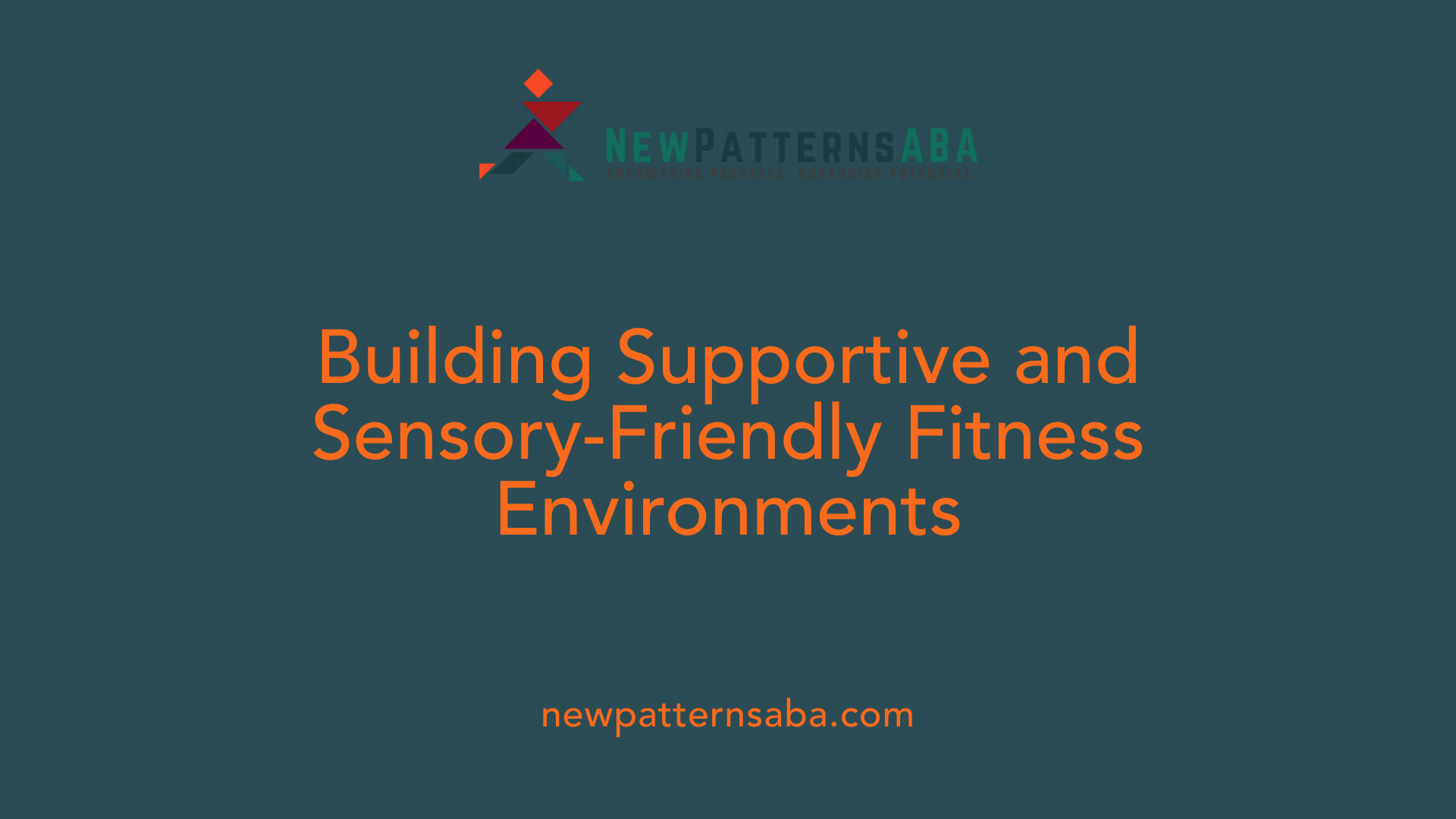 Creating effective fitness programs for young adults with autism involves thoughtful modifications that respect individual sensory sensitivities, interests, and developmental needs.
Creating effective fitness programs for young adults with autism involves thoughtful modifications that respect individual sensory sensitivities, interests, and developmental needs.
One of the most important strategies is adapting the sensory environment. This includes minimizing loud noises, bright lights, and other stimuli that can be overwhelming. For example, using softer lighting, sound-absorbing materials, and quiet spaces can make the environment more welcoming.
Visual aids and social stories are valuable tools to support understanding and predictability. Visual schedules, picture cards, and social stories about the activities help participants know what to expect, reducing anxiety and uncertainty.
Breaking tasks into small, manageable steps is essential. For example, teaching a complex movement by dividing it into simpler motions allows for easier mastery and boosts confidence. Celebrating small successes, such as completing a challenging exercise or following instructions, fosters motivation and a sense of achievement.
Supporting independence is another crucial component. Teaching routines like warm-up and cool-down exercises, as well as how to prepare for activities, helps individuals become more self-reliant. Practicing these skills outside of group sessions reinforces learning and comfort.
Incorporating sensory supports such as visual aids and social stories into the routine creates a structured, predictable experience. These supports can help individuals transition smoothly between activities and maintain focus.
Activities like obstacle courses, ball exercises, and adapted sports develop motor skills, coordination, and social interaction. Including activities like yoga, nature walks, and music therapy can further improve emotional regulation and sensory processing.
Overall, a comprehensive approach that combines environmental adaptations, visual supports, task modifications, and sensory strategies fosters a safe, engaging, and supportive fitness environment for individuals on the autism spectrum.
For more information, search using phrases like "Creating optimal sensory environments for autism fitness classes" to find practical resources and expert guidance.
Guidelines for Tailoring Fitness Routines to Sensory, Social, and Motivational Needs
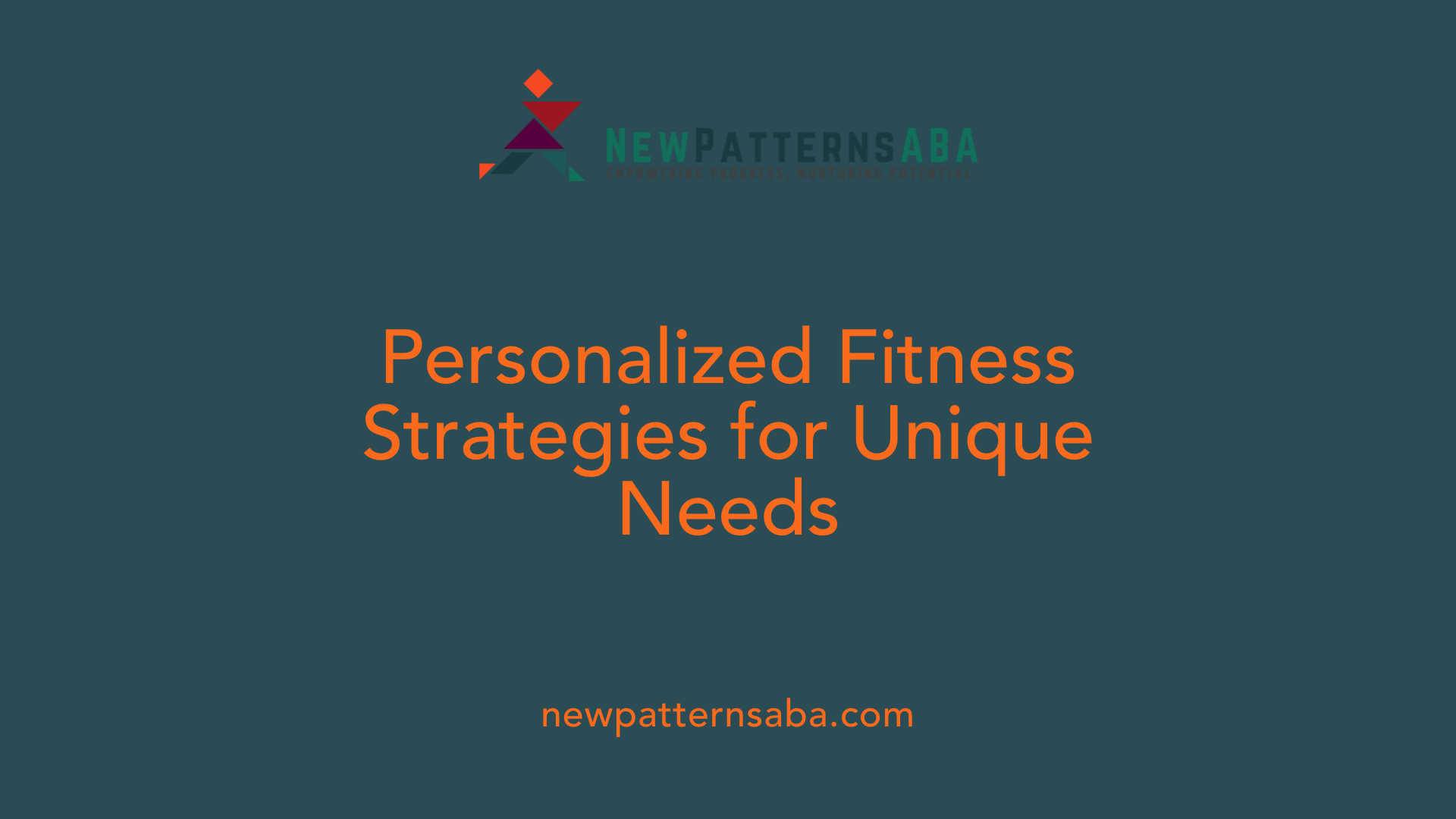
How can fitness routines be customized to meet sensory, social, and motivation needs of individuals with autism?
To effectively support individuals with autism, fitness programs should start with assessing each person's sensory sensitivities. Some may be overwhelmed by bright lights or loud sounds, so routines must be adapted to create sensory-friendly environments—like dimming lights, reducing noise, or using calming textures and visuals. Activities such as yoga, swimming, or martial arts are often calming and can be tailored to individual comfort levels.
In addition, routines should incorporate activities that enhance motor skills and social interaction. For example, group exercises or sports like adapted soccer or swimming classes encourage teamwork and communication. Movement-based exercises like animal patterns (bear walks, frog hops) or obstacle courses help build motor coordination, strength, and confidence.
Engaging individuals in the activity planning process is crucial. Allowing them to choose preferred activities, or integrate personal interests like dance or art-inspired workouts, increases motivation and enjoyment. This inclusion fosters a sense of purpose and ownership over their fitness journey.
Balancing different fitness components—strength, flexibility, cardiovascular health—is vital. Programs should include resistance exercises like weight training tailored to individual abilities, alongside flexibility routines such as stretching or yoga, and cardio activities like jump rope or full-body star jumps. These elements contribute holistically to health and well-being.
Collaboration with families and professionals enriches program effectiveness. Consultants such as physical therapists, teachers, and caregivers can provide insights into optimal exercises and modifications, ensuring safety and relevance. Certified adaptive trainers experienced in working with autism can adapt routines with readily available modifications to suit sensory and behavioral needs.
Implementing these guidelines involves training fitness staff in autism-specific approaches, understanding the importance of structure, predictability, and positive reinforcement. Ongoing adjustments based on feedback from participants and their support networks help maintain engagement and progress.
By focusing on individualized sensory accommodations, promoting motor and social skills, and fostering collaborative planning, tailored fitness routines can significantly improve health outcomes, emotional regulation, and social participation among people with autism.
Designing Inclusive and Effective Fitness Programs
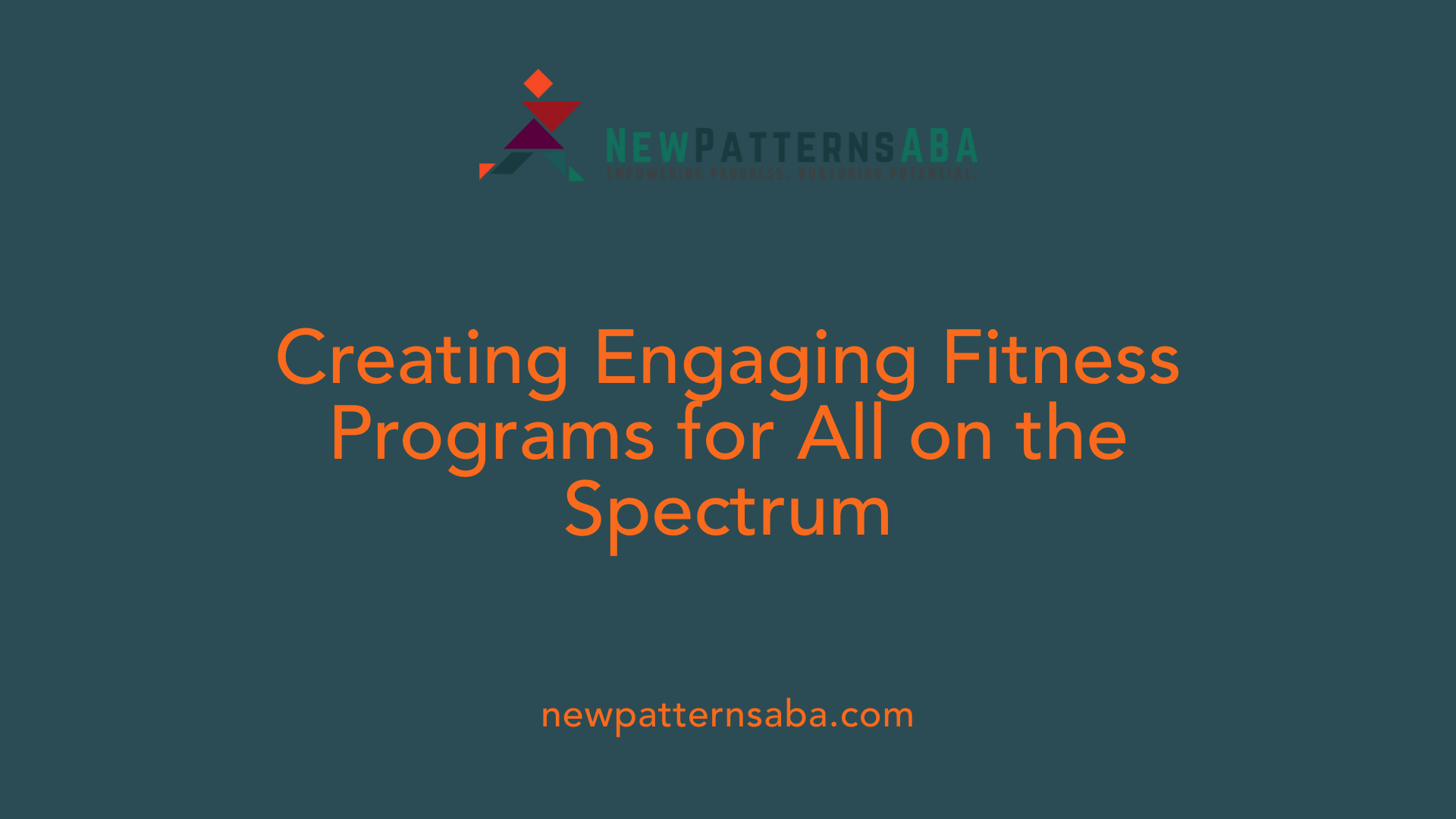
How can fitness programs be designed to be inclusive and effective for people on the autism spectrum?
Creating fitness routines that truly work for individuals with autism requires a personalized approach. Recognizing each person’s unique abilities, interests, and sensory sensitivities is foundational. For instance, some may find traditional gym environments overwhelming due to bright lights or loud noises. To accommodate this, programs incorporate sensory-friendly equipment and activities, such as yoga, swimming, or martial arts, which are often calming and promote a sense of accomplishment.
Using visual supports and structured routines can greatly aid understanding and independence. Visual schedules, social stories, or picture cards help guide exercises and set expectations, making routines predictable and less intimidating. Clear, simple instructions combined with positive reinforcement motivate participation and foster confidence.
Sensory-friendly modifications are vital. This can include using equipment designed specifically for sensory sensitivities or adjusting the environment—like outdoor spaces or quiet rooms—to minimize hyperstimulation. Tasks such as bear crawls, mirror exercises, and ball slams can be adapted to fit individual sensory profiles, promoting motor skills, sensory integration, and mental focus.
Evidence-based practices such as task analysis, which involves breaking down complex movements into smaller steps, help teach skills gradually and safely. Prompting techniques and visual cues assist learners with receptive communication challenges, ensuring exercises are accessible.
Professional guidance is essential. Certified adaptive trainers and therapists trained in autism-specific approaches are well-equipped to develop safe, effective programs. They can modify routines on the fly, monitor for signs of fatigue or distress, and offer encouragement tailored to each individual.
Lastly, fostering an environment of empowerment and support encourages sustained participation. Celebrating successes, setting achievable goals, and encouraging social interaction through group activities or partner exercises improve not just physical health but also social skills and self-esteem.
In summary, accessible, personalized, and supportive fitness programs—designed with an understanding of individual needs—are fundamental to promoting health, motor development, and overall well-being among people with autism.
Specialized Methods and Professional Guidelines
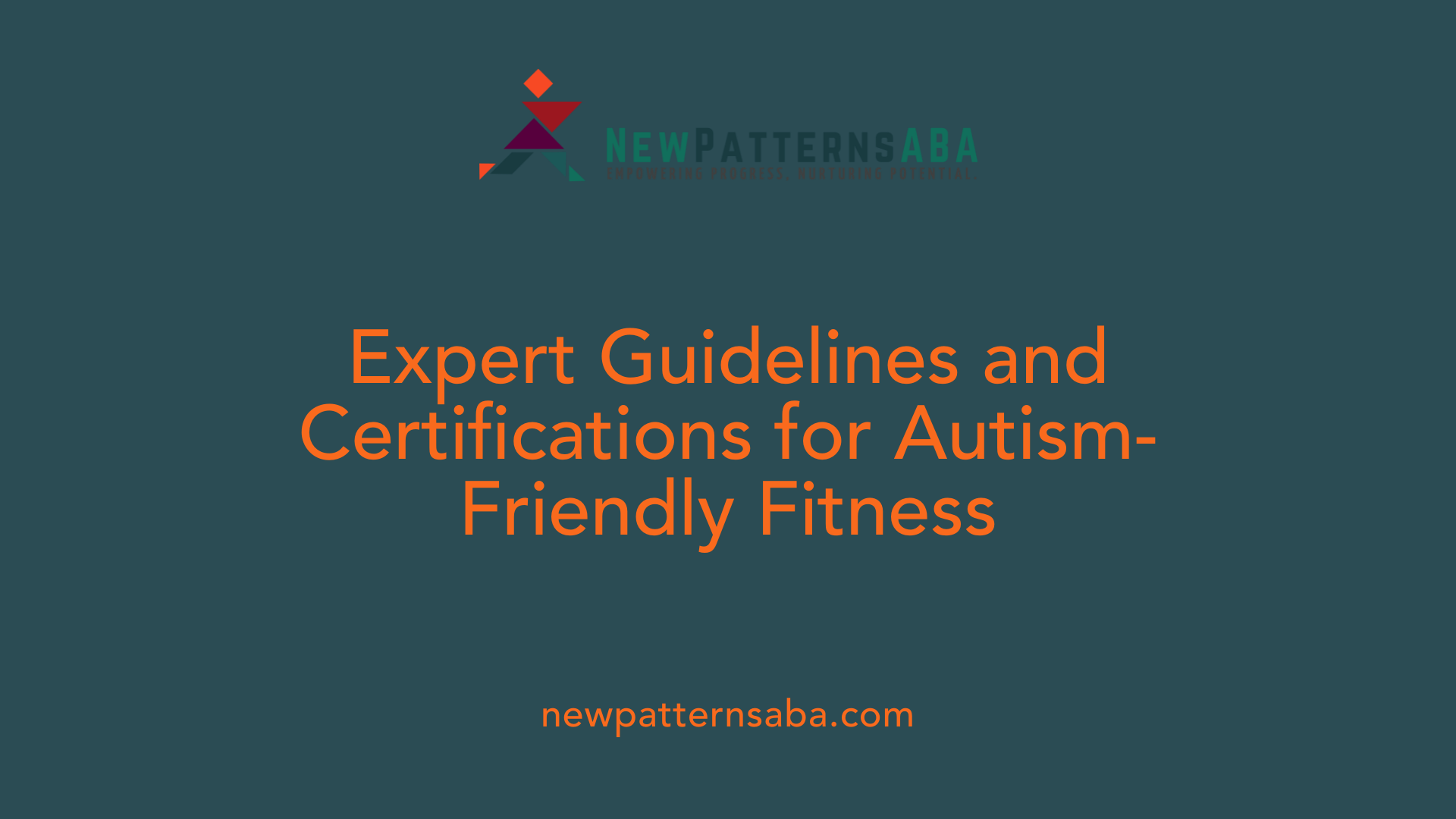
What methods and methodologies are used for developing and implementing autism-friendly fitness classes?
Creating effective fitness programs for individuals with autism involves a collaborative approach. Trainers, therapists, educators, and caregivers work together to design activities that meet each person's unique needs. Evidence-based adaptations are central to this process. For example, exercises like ball tap and hold, obstacle courses, and dance routines are tailored to improve motor skills and coordination while considering sensory sensitivities.
Inclusive environments play a vital role. Many community-based programs incorporate adapted sports such as swimming and martial arts to foster engagement and social skills. These activities are modified to accommodate sensory preferences, reducing overstimulation and promoting comfort.
Continuous assessment and feedback are crucial. Regularly reviewing progress allows adjustments to be made, ensuring exercises remain effective and accessible. Additionally, integrating calming techniques like mindfulness and yoga can help in sensory regulation and emotional stability. Overall, these strategies create a supportive framework for individuals with autism to experience the benefits of exercise safely and enjoyably.
Are there certifications or professional guidelines available for fitness professionals to run autism-friendly fitness initiatives?
Yes, specialized certifications and guidelines exist to support fitness professionals working with individuals on the autism spectrum. The Autism Fitness Certification, for instance, offers in-depth training focused on designing personalized exercise programs that consider physical, cognitive, and behavioral traits.
This certification employs the PAC (Physical Activity and Cognitive) Profile Method, a comprehensive assessment tool that helps identify the most suitable exercises based on an individual’s abilities. The training covers various adaptive techniques, including modifications for sensory sensitivities, motor challenges, and behavioral issues.
Beyond Autism Fitness, organizations like Strong Education provide broader certifications for adaptive fitness, emphasizing inclusive, evidence-based, and holistic practices. These credentials help trainers, therapists, teachers, and caregivers develop the expertise needed to effectively support and empower individuals with autism through structured, engaging, and safe exercise routines.
Evidence Supporting Exercise Benefits in Autism Spectrum Disorder
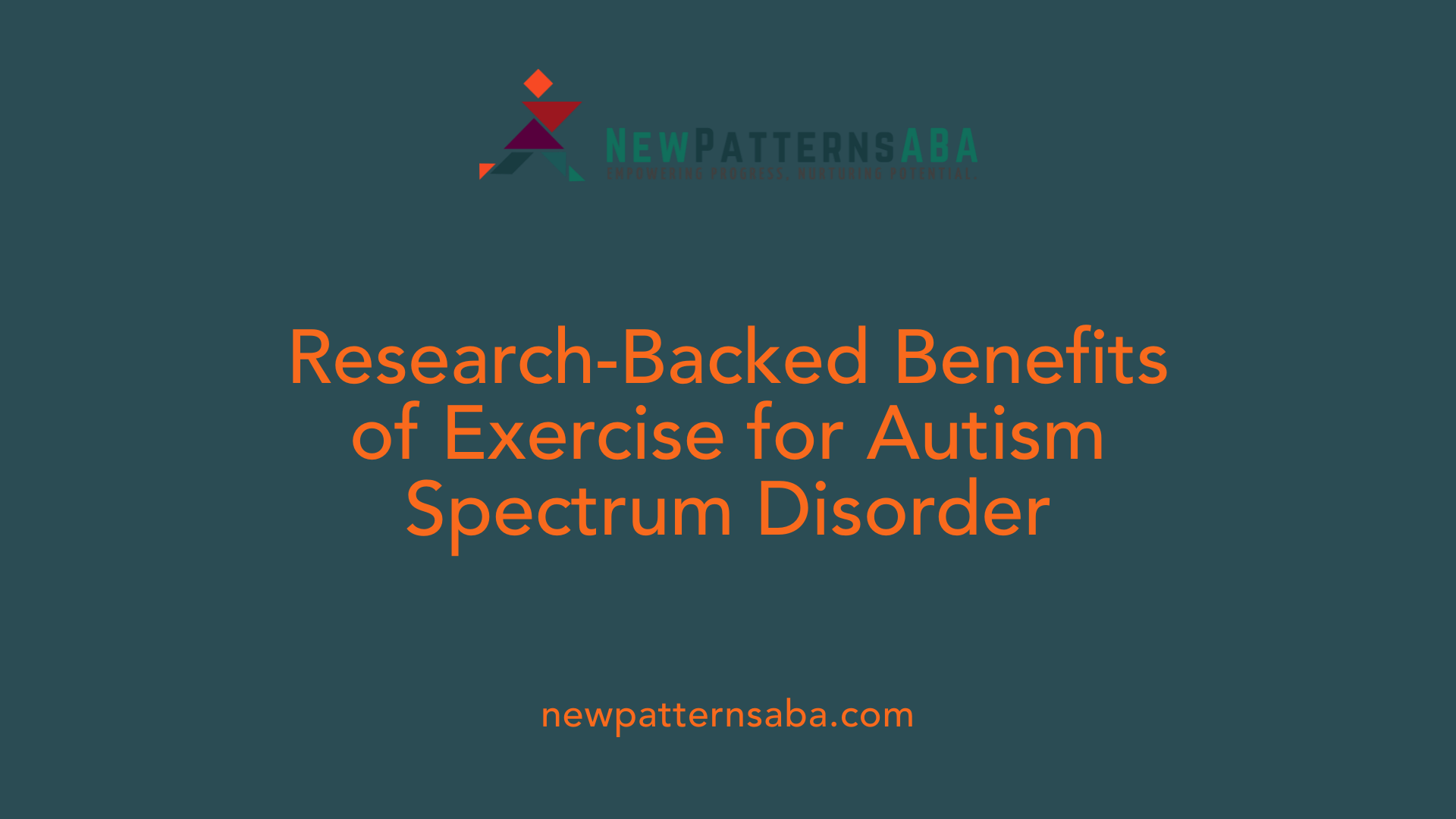
Research findings and studies
Numerous studies reinforce the positive impact of tailored exercise programs for individuals with autism spectrum disorder (ASD). A notable 2018 study indicated significant improvements in metabolic health and reductions in autism-related traits following consistent physical activity. An expansive review analyzing 29 studies found that exercise has a moderate to large effect on skills such as motor development, social functioning, muscle strength, and endurance.
Effects on motor skills, behavior, and social function
Regular physical activity helps enhance coordination, balance, and motor planning, which are often challenged in children with ASD. Engaging in movement-based exercises like animal walks, obstacle courses, and resistance training can improve these skills. Additionally, exercise can decrease stereotypical behaviors, promote better communication, and improve overall social interactions.
Benefits of different exercise types (dance, swimming, martial arts)
Activities such as dance routines, swimming, martial arts, and team sports like soccer foster coordination, sensory integration, and confidence. For example, swimming and water play support sensory engagement, while martial arts promote discipline and impulse control. Dance routines, guided by skilled instructors, enhance motor coordination and emotional expression.
Impact on physical health and metabolic parameters
Given that children with ASD are at risk of obesity and related health issues, exercise plays a vital role in maintaining physical health. Resistance training, aerobic exercises like star jumps, and outdoor activities help improve muscular strength, endurance, and cardiovascular health. Properly designed physical activities can also assist in managing sleep problems and overall mood.
Inclusion strategies in exercise programs
Effective programs incorporate creative activities tied to meaningful tasks, adaptations for sensory sensitivities, and modifications to accommodate individual needs. Utilizing tools like fitness apps, interactive games, and social stories fosters engagement and helps manage environmental hyperstimulation. Family participation, reward systems, and collaboration with therapists enhance motivation and ensure a safe, enjoyable experience.
| Aspect | Exercise Types | Benefits | Implementation Tips |
|---|---|---|---|
| Motor skill development | Animal walks, obstacle courses, ball-tapping | Improve coordination, balance, muscle strength | Use visual cues, modify difficulty levels |
| Social interaction | Group sports, team activities | Enhance communication, teamwork | Foster inclusive settings, involve caregivers |
| Sensory regulation | Swimming, dance, yoga | Promote sensory integration | Prepare environment, offer alternatives |
| Physical health | Resistance and aerobic exercises | Boost physical fitness, metabolic health | Customize intensity, monitor fatigue |
Evidence demonstrates that personalized, enjoyable exercise routines can significantly improve many aspects of health and behavior in individuals with ASD, making physical activity an essential component of comprehensive care.
Innovative Approaches to Enhance Engagement and Outcomes
How can technology be used to improve motivation and engagement in exercise routines for young adults with autism?
Integrating technology like fitness apps and interactive games has become an effective way to maintain interest and motivation. These tools can provide visual cues, progress tracking, and gamify workouts, making physical activity more engaging. For example, adaptive fitness programs often incorporate apps that adjust exercises based on individual performance, ensuring routines remain challenging yet achievable.
How do music, art, and nature therapies contribute to fitness programs?
Incorporating music, art, and nature therapies offers additional sensory and emotional benefits. Music and dance routines can foster coordination and confidence, while art therapy activities promote creative expression and emotional stability. Nature walks and hiking not only enhance sensory exploration but also improve emotional well-being by connecting individuals with the outdoors.
What is the importance of developing routines aligned with individual interests?
Creating personalized, interest-based routines increases the likelihood of ongoing participation. When activities reflect a person’s passions—such as martial arts, swimming, or dance—they develop a sense of purpose and enjoyment. Tailoring routines to sensory preferences and passions encourages consistency, which supports motor skills development, emotional regulation, and overall health.
How can rewards and reinforcement strategies support ongoing exercise participation?
Using rewards and positive reinforcement helps manage impulse control and motivate continued engagement. Clear expectations, reward systems, and social praise can make routines more predictable and enjoyable. Incorporating small incentives encourages progress and builds confidence, especially when routines involve new or challenging activities.
Why is family and peer involvement crucial in autism fitness programs?
Involving families and peers fosters social interaction and teamwork. Family participation provides motivation and reinforces routines at home, while peer support enhances social skills and community connectedness. Group exercises and collaborative activities create opportunities for meaningful socialization, which can lead to better behavioral and communication outcomes.
| Approach | Benefits | Implementation Tips |
|---|---|---|
| Use of Technology | Increases interest, provides feedback | Use adaptive apps, video games, and virtual reality programs tailored for autism |
| Art, Music, Nature Therapies | Enhances sensory processing, emotional well-being | Incorporate creative sessions, outdoor activities, and sensory-friendly environments |
| Personalized Routines | Boosts engagement, supports individual needs | Align activities with passions, adjust based on sensory sensitivities |
| Rewards & Reinforcement | Promotes motivation, improves stick-to-itiveness | Use tangible rewards, praise, and visual cues |
| Family & Peer Support | Strengthens social skills, builds confidence | Encourage joint sessions, peer-led activities, family involvement |
Employing these innovative methods can make exercise routines more inclusive, enjoyable, and effective for young adults with autism, leading to improved physical, emotional, and social skills.
Advancing Autism-Friendly Fitness through Expertise and Empathy
Developing and implementing effective autism-friendly fitness classes requires a multifaceted approach that combines evidence-based methods, professional training, and personalized adaptations. Embracing sensory sensitivities, promoting social interaction, and integrating innovative practices can make fitness accessible, enjoyable, and beneficial for individuals across the spectrum. As awareness grows and guidelines expand, fitness professionals, caregivers, and educators have the opportunity to transform exercise into a powerful tool for enhancing health, confidence, and quality of life for those with autism.
References
- Tailoring Fitness to Young Adults with Autism - CIP Blog
- Adaptive fitness exercises for autism
- Building An Autism Friendly Workout Plan
- 10 Autism Fitness Strategies for a Healthy Lifestyle
- 7 Fun Exercises for Kids with Autism
- Finding a Winning Special Needs Exercise Program
- Autism Fitness
- Autism-Friendly Exercise Ideas for Kids






